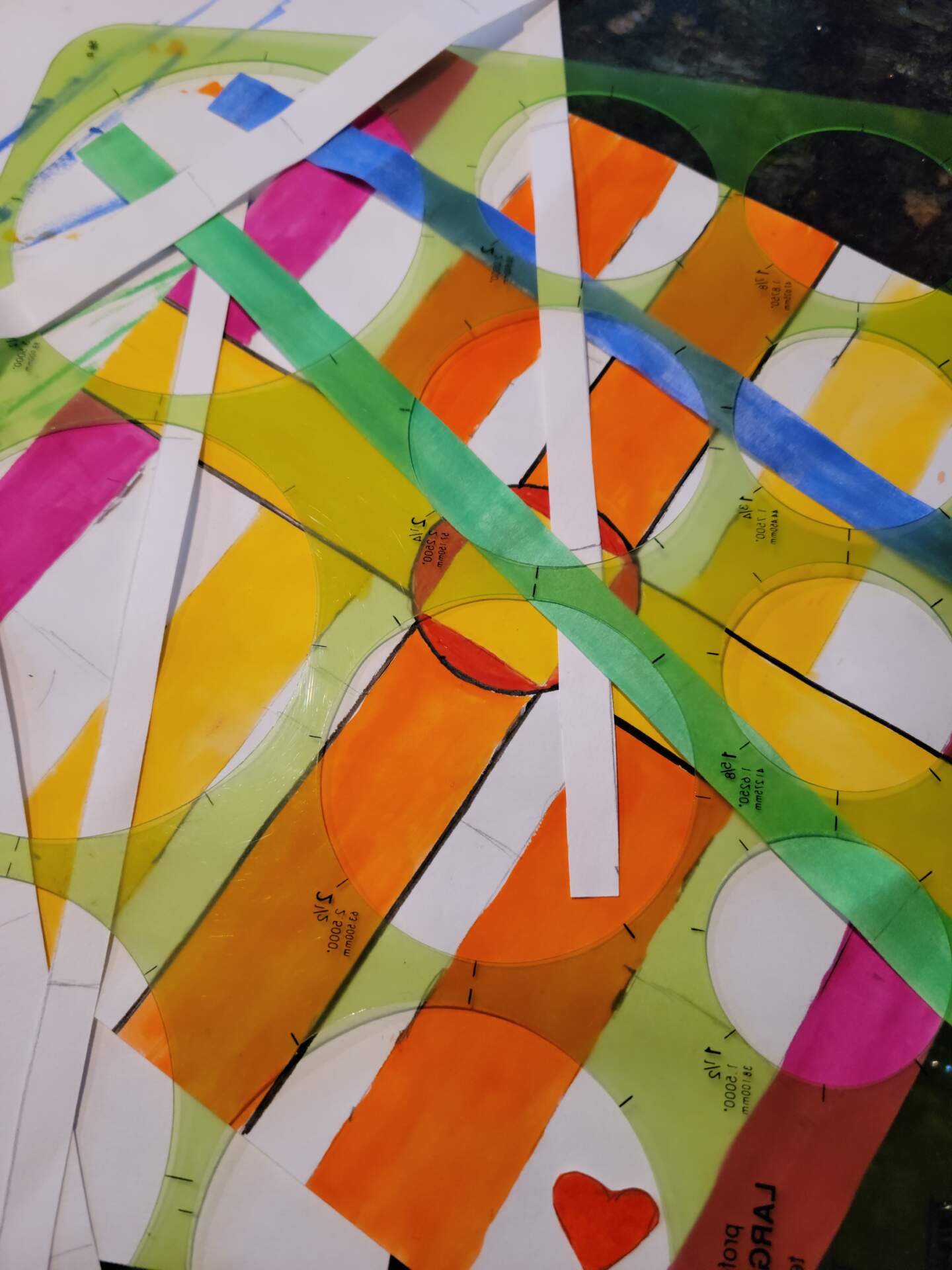We are just back from a trip to North Carolina where we bicycled a couple of really nice Rails-to-Trails. The trip involved more bicycling than I have done this year so, while I give myself some time to recover and write about the trip, I thought I would post about a recent visit to Knoxville’s local art museum, Knoxville Museum of Art.
I haven’t been to the Knoxville Museum of Art in a number of years. During those years I developed a certain amount of pleasure in studying art, especially the detail work. More than the overall picture, my eye is drawn to the individual lines, shapes, colors and techniques. My walk through the museum resulted in several interesting ideas for my own artwork including some pencil work that would be challenging and a cut and paste project.
Looking back at my notes and photos, I find I have recorded some things about some works of art and neglected to note even the artist for others. This was the first piece of art that caught my eye and one I did not record the artist. But, what’s not to love here? Repetition, symmetry and pencil work, all fascinating to me.
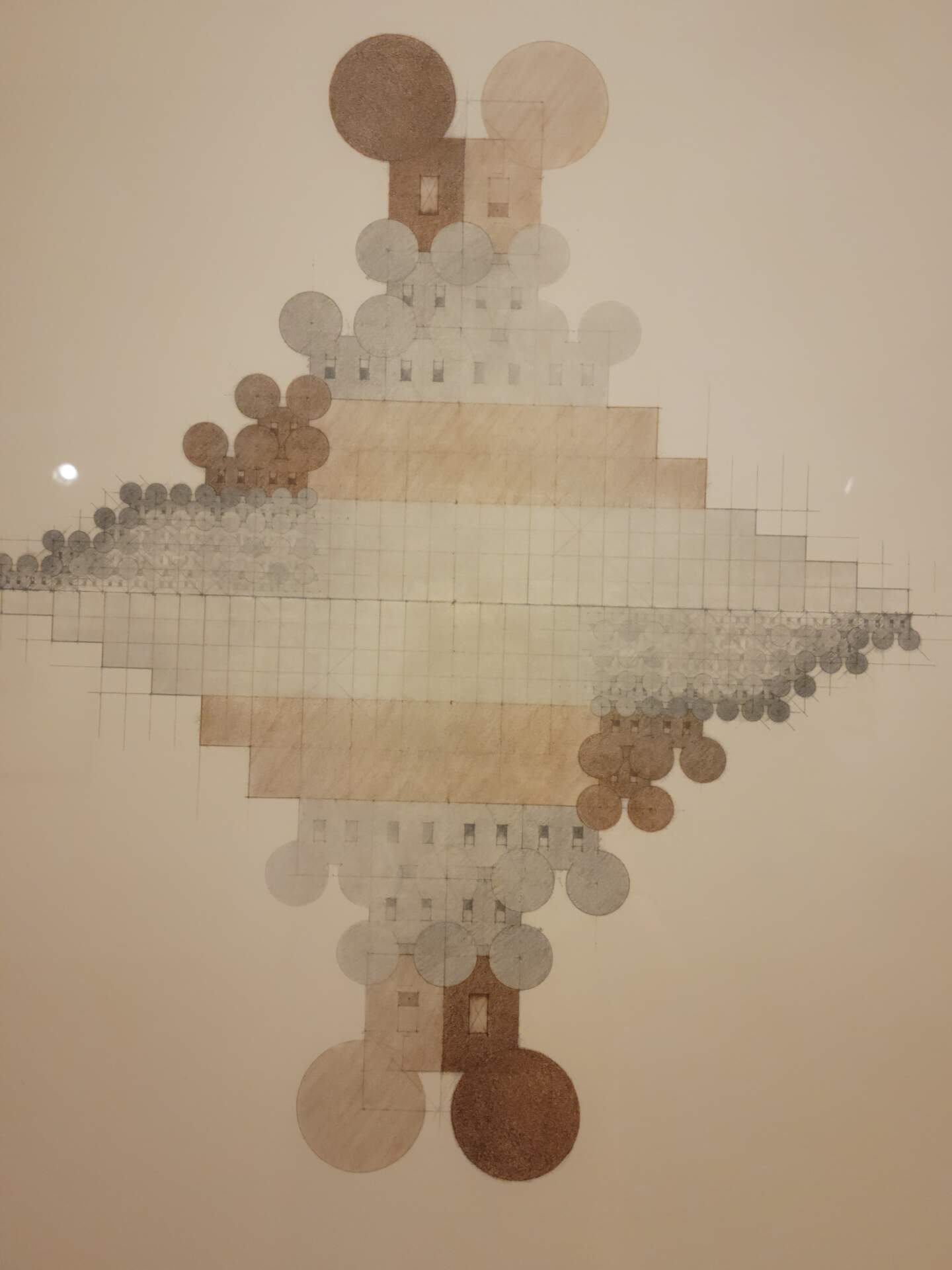
Sectional picture of the details…
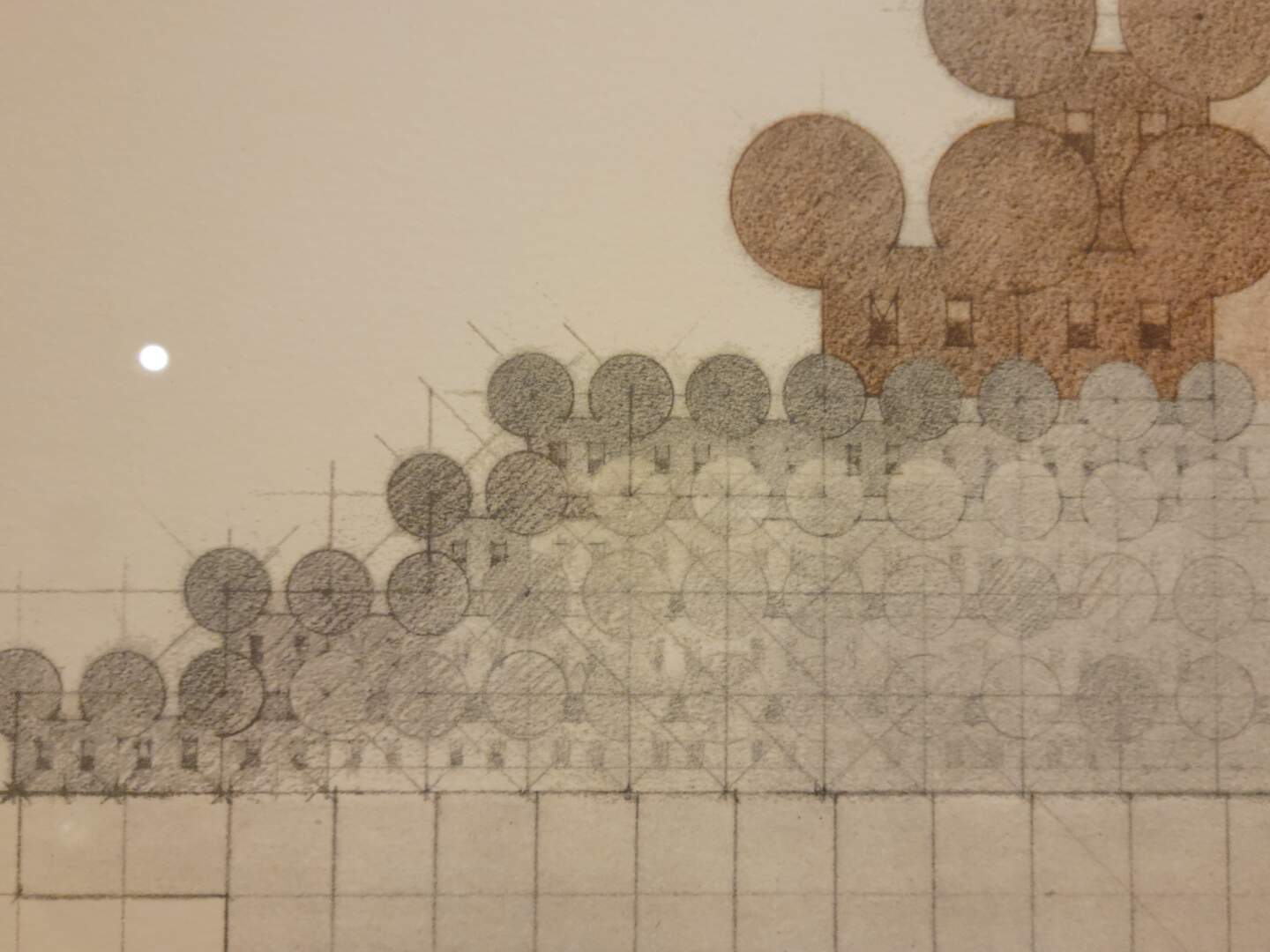
My favorite pieces in the display were created by Faith Wilding, an artist who was born Paraguay in 1943 and now lives and works in Providence, Rhode Island. She is a multidisciplinary artist whose works include watercolour, performance art, writing, crocheting, knitting, weaving and digital art. She is Professor Emerita of performance art at the School of the Art Institute of Chicago.
Through her art, she unites her interests in the female body, the environment and themes of generation and transformation. In this exhibition, her artwork features watercolour washes, pencil, gold leaf, text, collage and woven paper. The beautiful image below, titled Up Rooted, includes watercolour, pencil, gold leaf and paper.
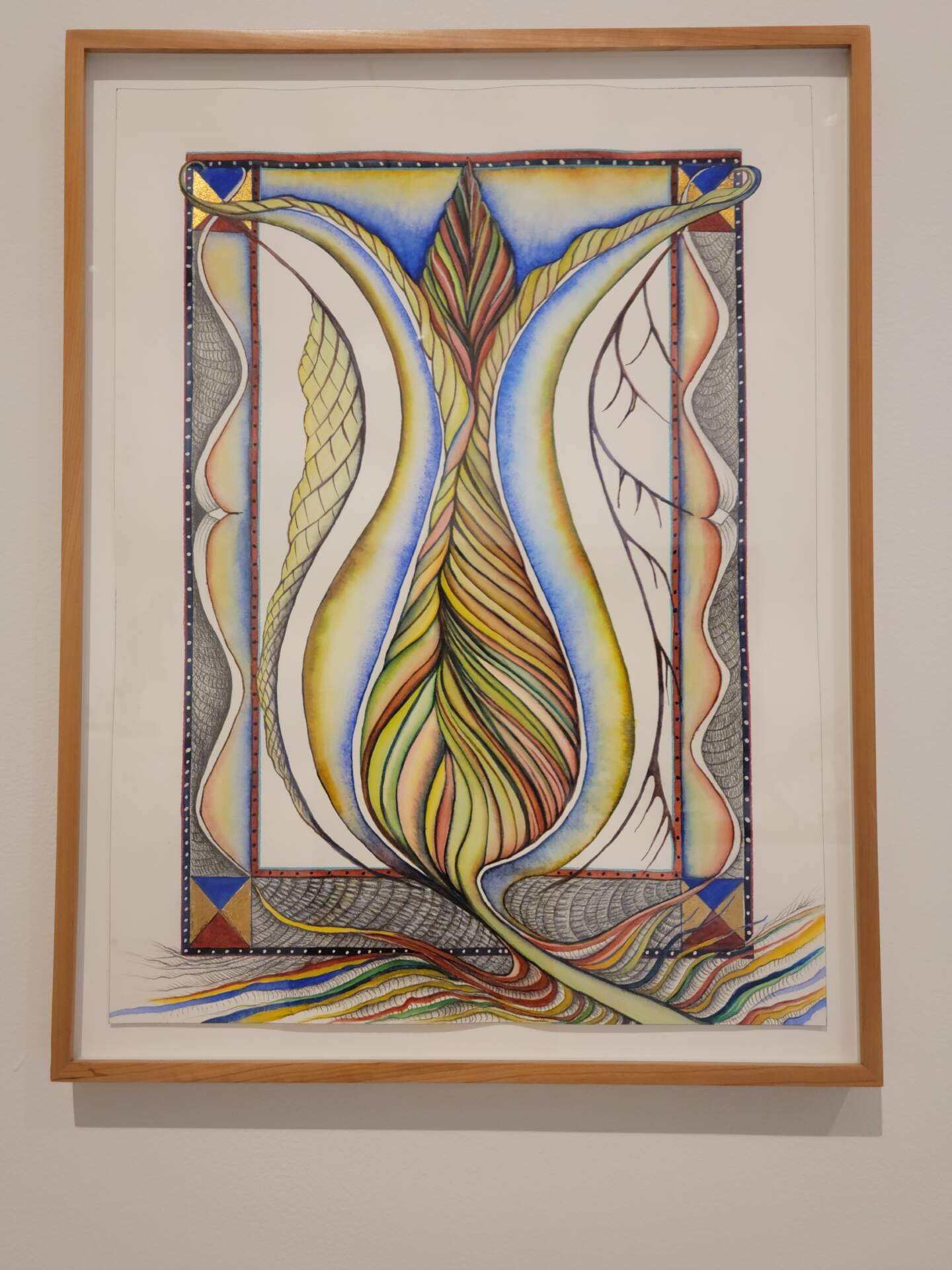
This was my favorite piece by Faith Wilding, which encompasses the essence of nature through her use of objects, colours, paper weaving and words, quoted from text from the La Plata Expedition.
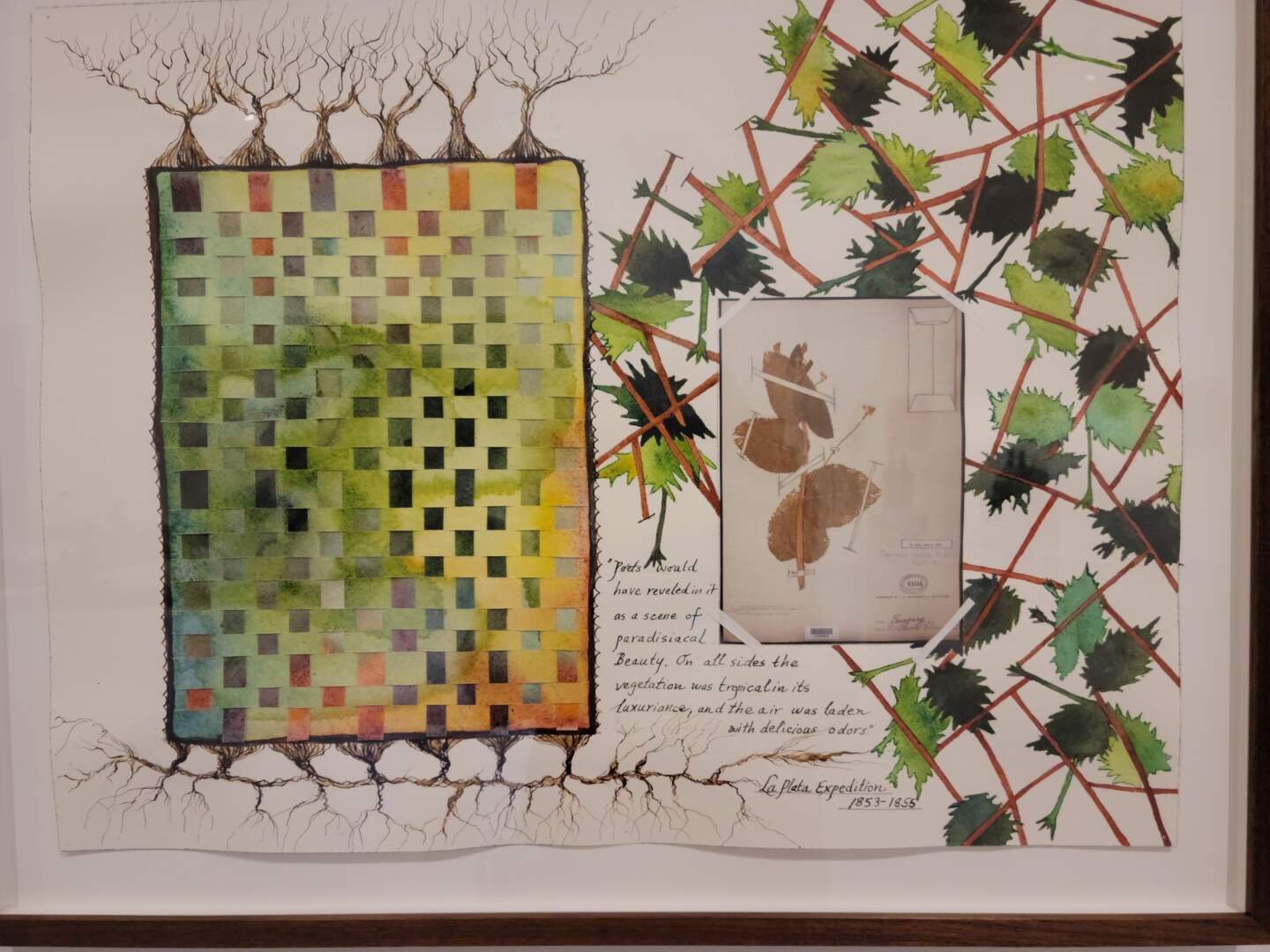
Below is a close-up of the words from the artwork above. The La Plata Expedition of 1853-1855 was one of the earliest collection of botanicals from the interior of South America. The expedition into the Basin of the Rio de la Plata was led by Captain Thomas Jefferson Page, US Navy, and included the Rio Parana and the Rio Paraguay.
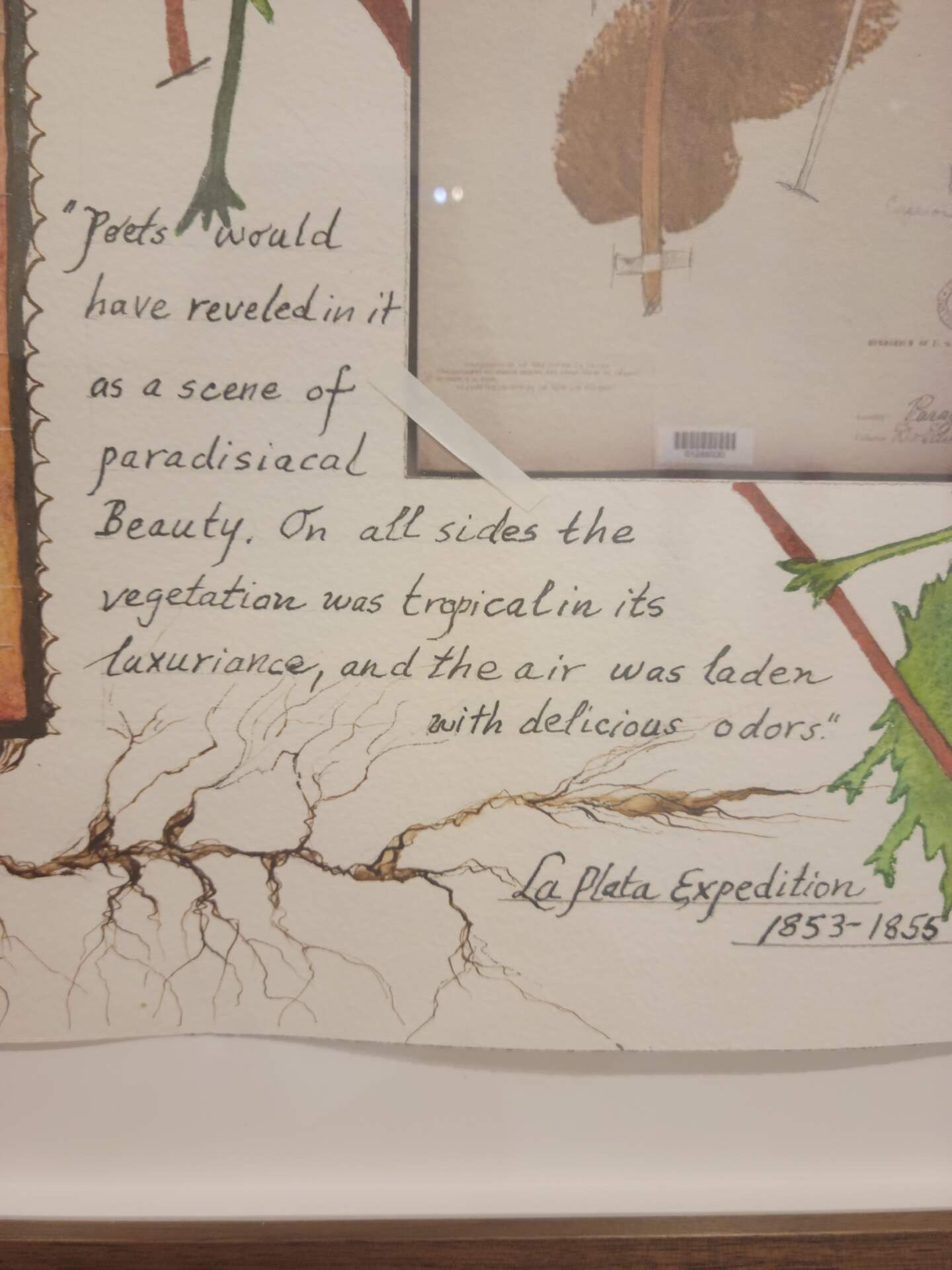
Another painting that I was immediately drawn was Resonator II. With it’s mid-tone colours and cut strips of canvas woven into a design, I noticed it as I first walked through the gallery door. Mid-tones were often used by my father in his artwork and while he did some cutting and pasting, his work was very different from this piece.
Annabeth Marks is the artist, and the work, acrylic on canvas. The museum’s write up describes Mark’s work as paintings that: “fold, hang and extend out toward the viewer and into the surrounding space, their gestural qualities being structural rather than pictorial.” This piece inspired me to come home and cut and paste paper to see if I could incorporate the ideas of colour and weaving into my own work.
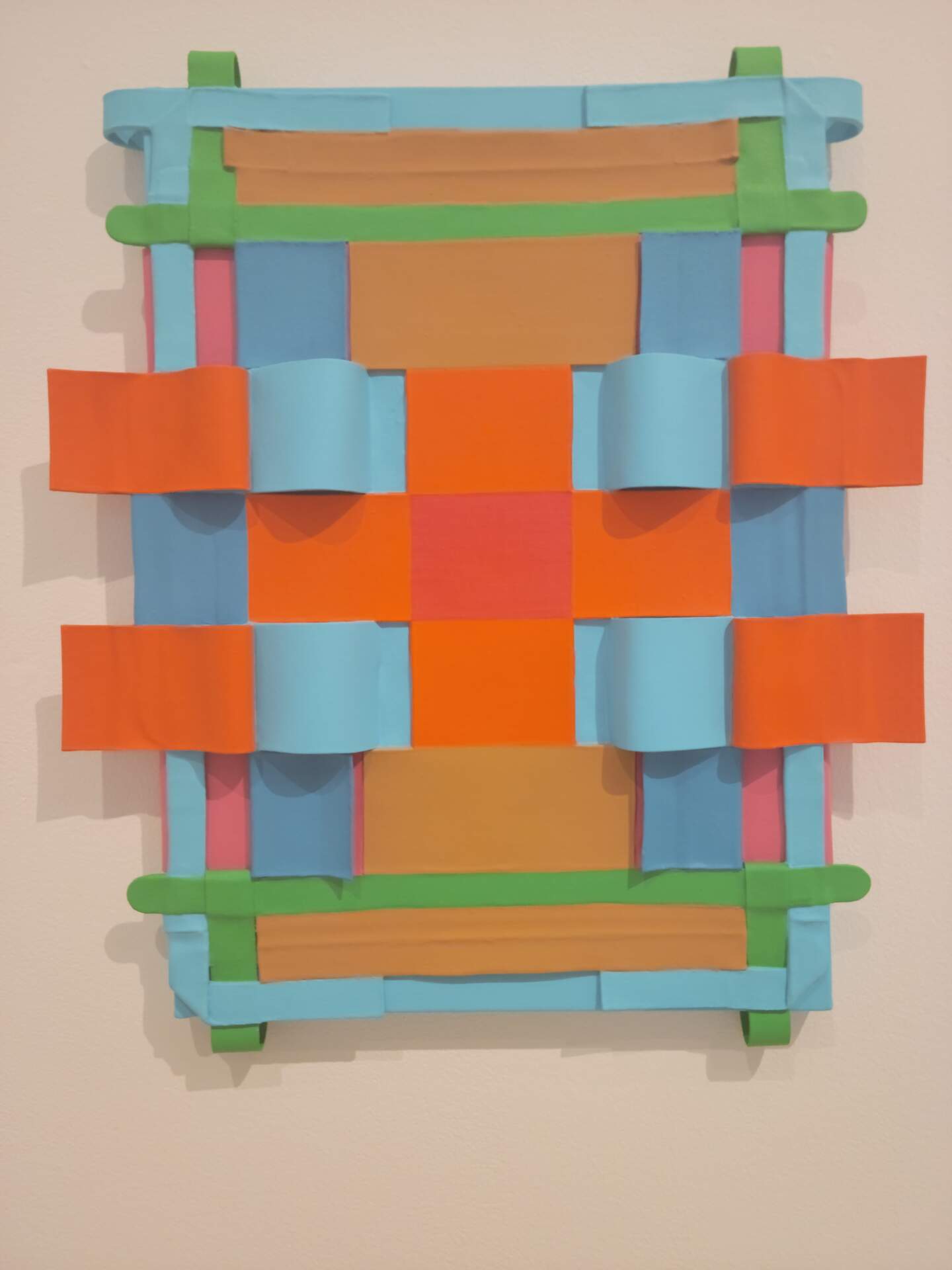
While in the museum, I also spent time in an exhibit titled “Higher Grounds”. Included in this exhibit is a group of artists called the “Knoxville 7.” Between 1955-1965, this group of seven, young artists were considered progressive for East Tennessee, several were attached to the art department at The University of Tennessee. While their subject interests were different, they shared the visual language of Abstract Expressionism, producing what was likely the first abstract art works in East Tennessee.
A couple of the artists were in my father’s orbit as I was growing up, so I was familiar with a few of the names. We had a picture from one of the artists hanging in the family living room. That connection made this a particularly interesting exhibit to me.
As a part of my 1/2 day out, I took myself to lunch at the Redbud Cafe in my neighborhood. While I am not particularly comfortable with solo eating, I had my phone and last month’s book club selection, “Silver Sparrow” by Tayari Jones, to read. I was also quite taken with the artwork above my head, brightly coloured squiggles of paint. The whole process, lunch, going to the museum, ended up being quite comfortable and I look forward to another solo outing.

As I noted above, the painting Resonator II inspired me to come home and work on my own cut and paste project. My artistic efforts are very spotty and there are long stretches where I get nothing done. But inspired, I sat down and started working as soon as I returned from the museum. Cheap paper, cheap gouache paint, my Bic mechanical pencil, Pentel eraser and a ruler were my tools to create. Afterall, this was just a test to see if I enjoyed the process…and I did, mostly.
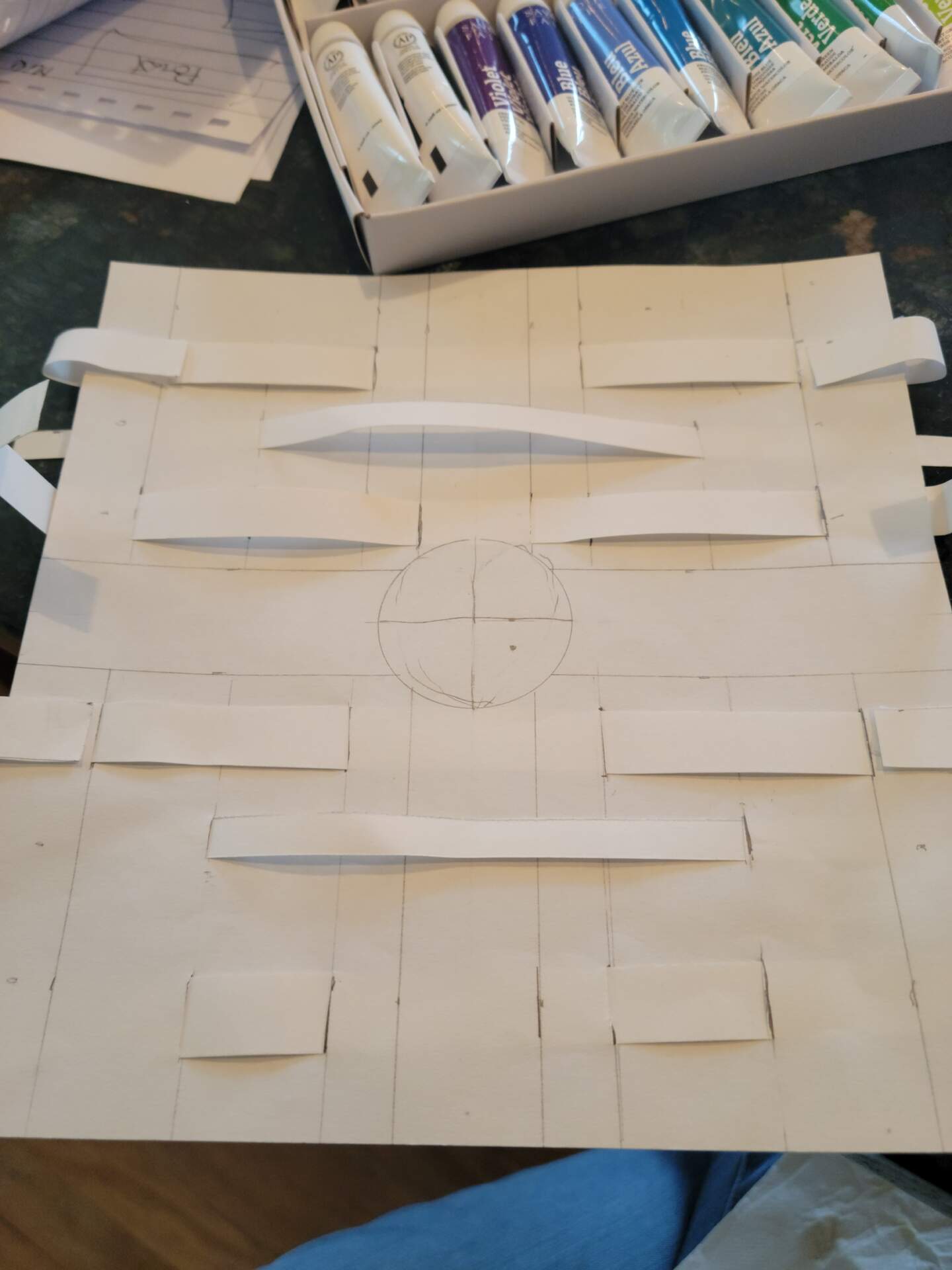
I drew my lines, cut strips and slits and painted in bright colours. This was fun. But, by the time I got to the weaving, I wasn’t so sure I liked what I was doing. Telling myself that I was just playing did not seem to help. I set the work aside for a few days but before I had a chance to go back, John came home from visiting his mother, the granddaughter drew lines on it with her markers and, well, life got in the way. So, the test project is still unfinished and sitting on the dining room table, in a pile under my circle template. I hope to get back to weaving soon!
